Effects of Non-Elevation-Focalized Linear Array Transducer on Ultrasound Plane-Wave Imaging
Abstract
:1. Introduction
2. Experimental Section
2.1. PWUS with Simulated Transducers
2.2. Evaluation of Acoustic Field
2.3. PWUS on a Standard Imaging Phantom
3. Results and Discussion
3.1. Simulation Results
3.2. Scanning the Acoustic Field in Transmission
3.3. PWUS with a Standard Imaging Phantom
4. Conclusions
Acknowledgments
Author Contributions
Conflicts of Interest
References
- Shung, K.K. Diagnostic Ultrasound: Imaging and Blood Flow Measurements; CRC Press: Boca Raton, FL, USA, 2006. [Google Scholar]
- Bercoff, J.; Tanter, M.; Fink, M. Supersonic shear imaging: A new technique for soft tissue elasticity mapping. IEEE Trans. Ultrason. Ferroelectr. Freq. Control 2004, 51, 396–409. [Google Scholar] [CrossRef] [PubMed]
- Hansen, K.L.; Udesen, J.; Gran, F.; Jensen, J.A.; Nielsen, M.B. In-vivo Examples of Flow Patterns With The Fast Vector Velocity Ultrasound Method. Ultraschall Med. 2009, 30, 471–477. [Google Scholar] [CrossRef] [PubMed]
- Tanter, M.; Bercoff, J.; Sandrin, L.; Fink, M. Ultrafast compound imaging for 2-D motion vector estimation: Application to transient elastography. IEEE Trans. Ultrason. Ferroelectr. Freq. Control 2002, 49, 1363–1374. [Google Scholar] [CrossRef] [PubMed]
- Bercoff, J.; Montaldo, G.; Loupas, T.; Savery, D.; Meziere, F.; Fink, M.; Tanter, M. Ultrafast Compound Doppler Imaging: Providing Full Blood Flow Characterization. IEEE Trans. Ultrason. Ferroelectr. Freq. Control 2011, 58, 134–147. [Google Scholar] [CrossRef] [PubMed]
- Mace, E.; Montaldo, G.; Cohen, I.; Baulac, M.; Fink, M.; Tanter, M. Functional ultrasound imaging of the brain. Nat. Methods 2011, 8, 662–664. [Google Scholar] [CrossRef] [PubMed]
- Provost, J.; Papadacci, C.; Arango, J.E.; Imbault, M.; Fink, M.; Gennisson, J.-L.; anter, M.; Pernot, M. 3D ultrafast ultrasound imaging in vivo. Phys. Med. Biol. 2014, 59, L1–L13. [Google Scholar] [CrossRef] [PubMed]
- Sandrin, L.; Catheline, S.; Tanter, M.; Hennequin, X.; Fink, M. Time-resolved pulsed elastography with ultrafast ultrasonic imaging. Ultrason. Imaging 1999, 21, 259–272. [Google Scholar] [CrossRef] [PubMed]
- Sandrin, L.; Tanter, M.; Catheline, S.; Fink, M. Shear modulus imaging with 2-D transient elastography. IEEE Trans. Ultrason. Ferroelectr. Freq. Control 2002, 49, 426–435. [Google Scholar] [CrossRef] [PubMed]
- Lu, J.Y. 2D and 3D high frame rate imaging with limited diffraction beams. IEEE Trans. Ultrason. Ferroelectr. Freq. Control 1997, 44, 839–856. [Google Scholar] [CrossRef]
- Lu, J.Y. Experimental study of high frame rate imaging with limited diffraction beams. IEEE Trans. Ultrason. Ferroelectr. Freq. Control 1998, 45, 84–97. [Google Scholar] [CrossRef] [PubMed]
- Montaldo, G.; Tanter, M.; Bercoff, J.; Benech, N.; Fink, M. Coherent Plane-Wave Compounding for Very High Frame Rate Ultrasonography and Transient Elastography. IEEE Trans. Ultrason. Ferroelectr. Freq. Control 2009, 56, 489–506. [Google Scholar] [CrossRef] [PubMed]
- Schiffner, M.F.; Jansen, T.; Schmitz, G. Compressed Sensing for Fast Image Acquisition in Pulse-Echo Ultrasound. Biomed. Tech. 2012, 57, 192–195. [Google Scholar] [CrossRef]
- Shen, M.; Zhang, Q.; Li, D.; Yang, J.; Li, B. Adaptive Sparse Representation Beamformer for High-Frame-Rate Ultrasound Imaging Instrument. IEEE Trans. Instrum. Meas. 2012, 61, 1323–1333. [Google Scholar] [CrossRef]
- Jensen, J.A. Field: A program for simulating ultrasound systems. Med. Biol. Eng. Comput. 1996, 34, 351–353. [Google Scholar]
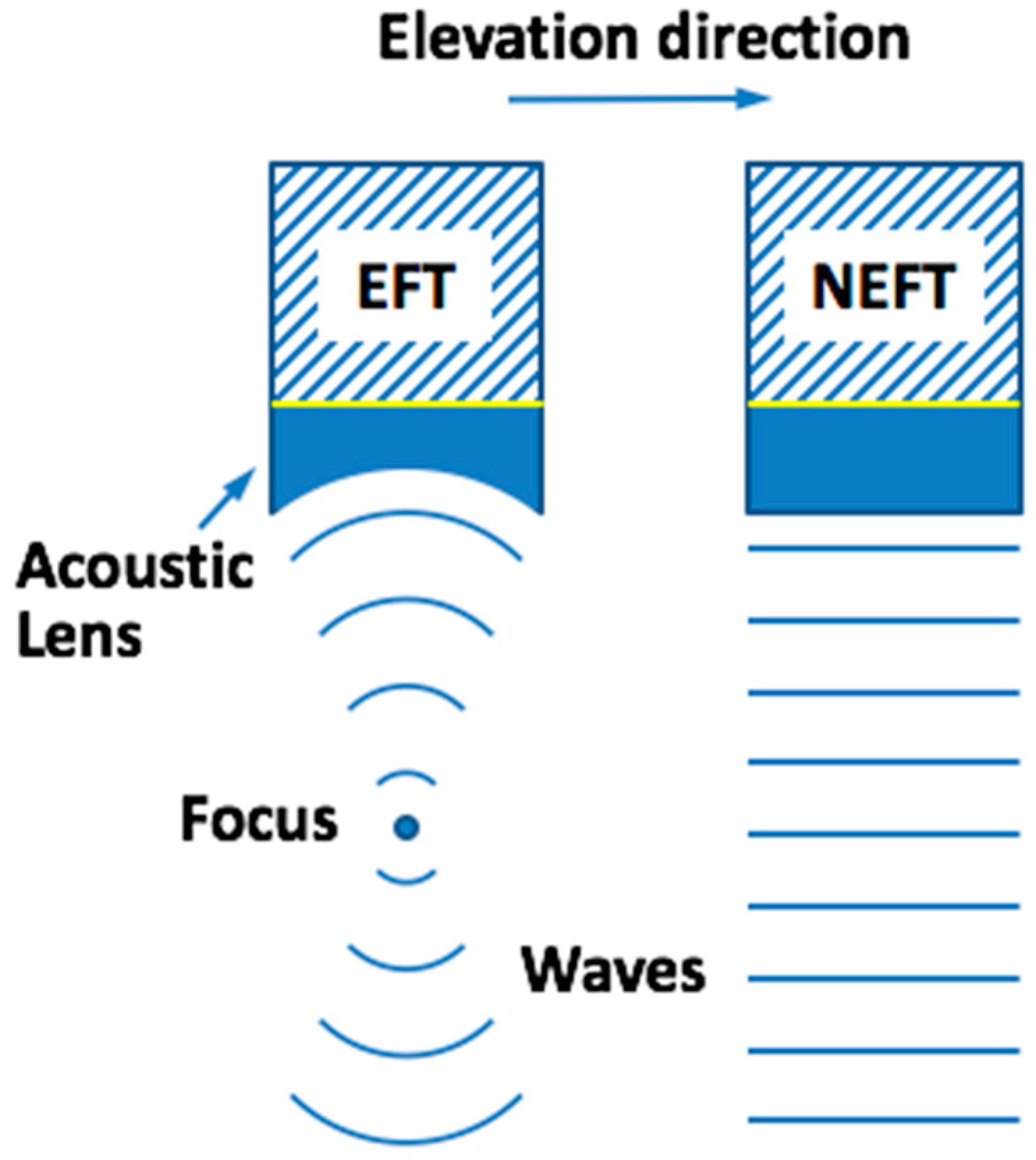
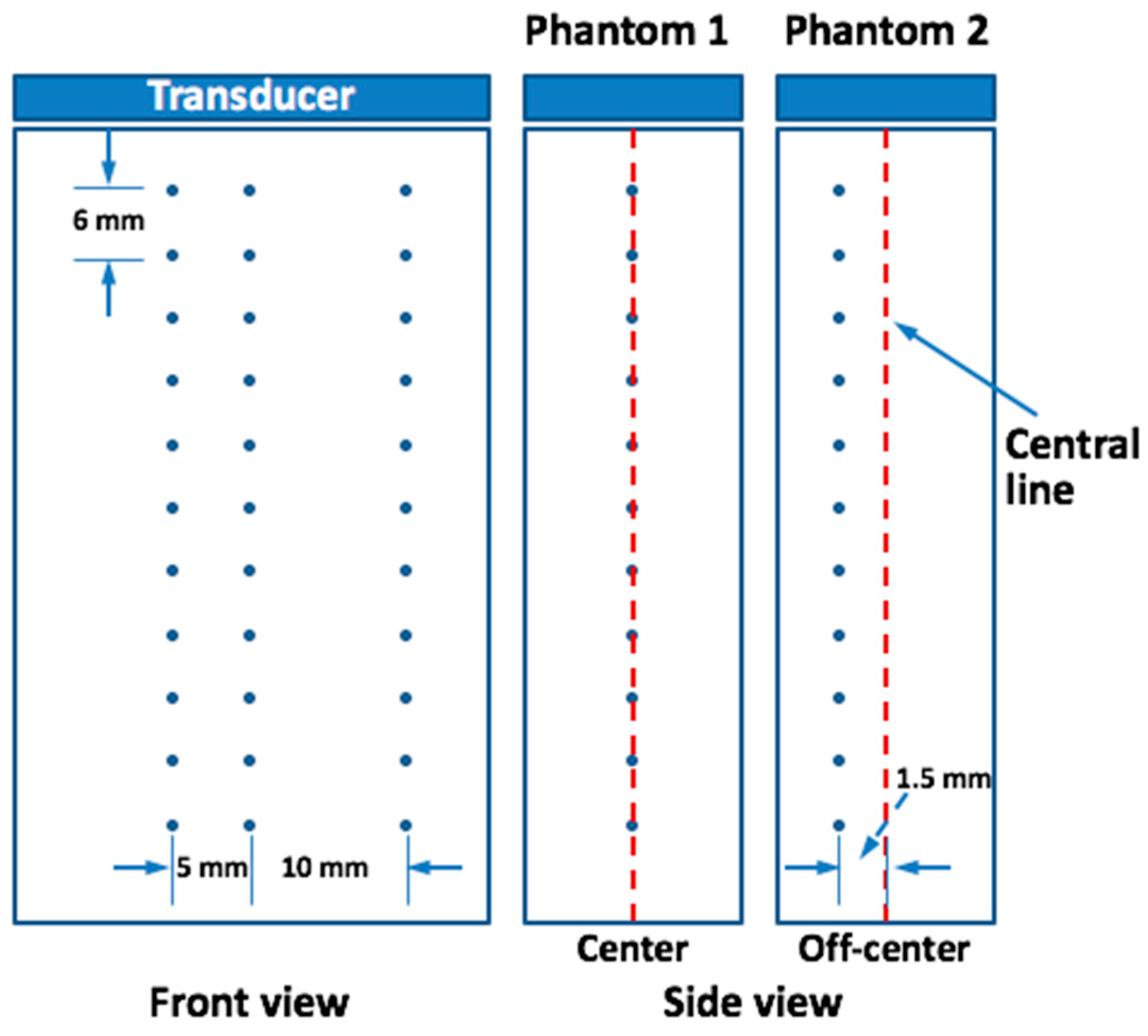
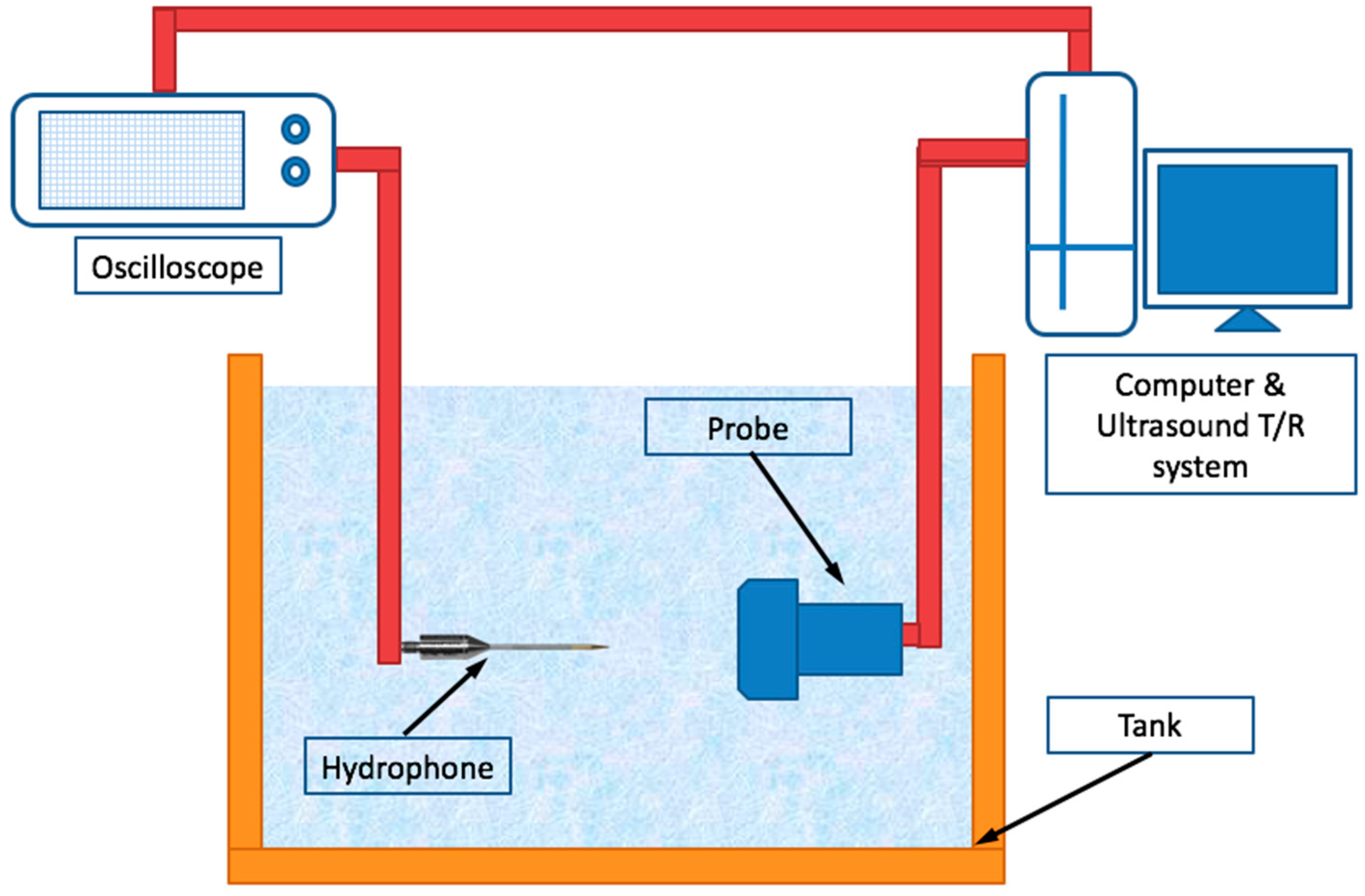
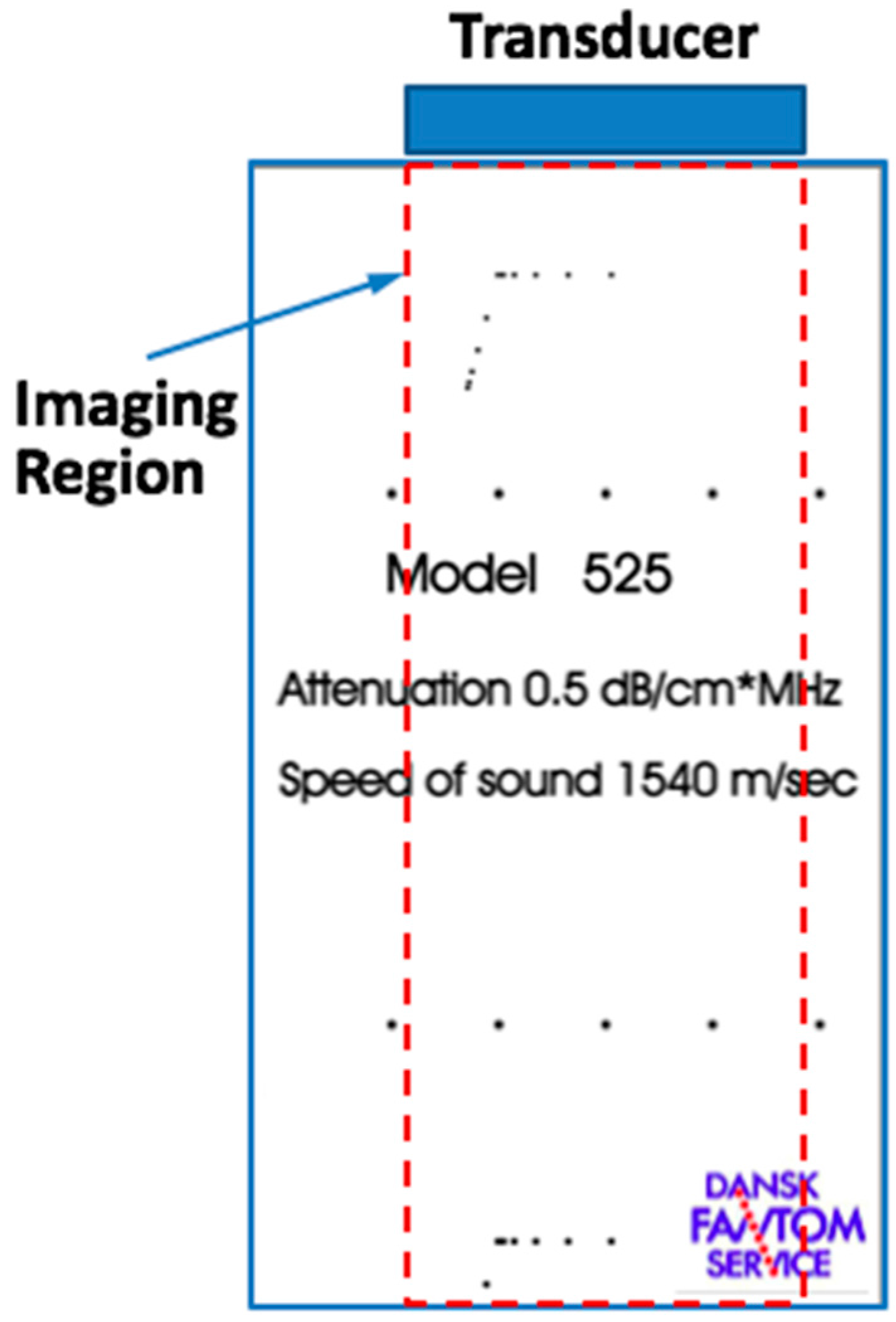
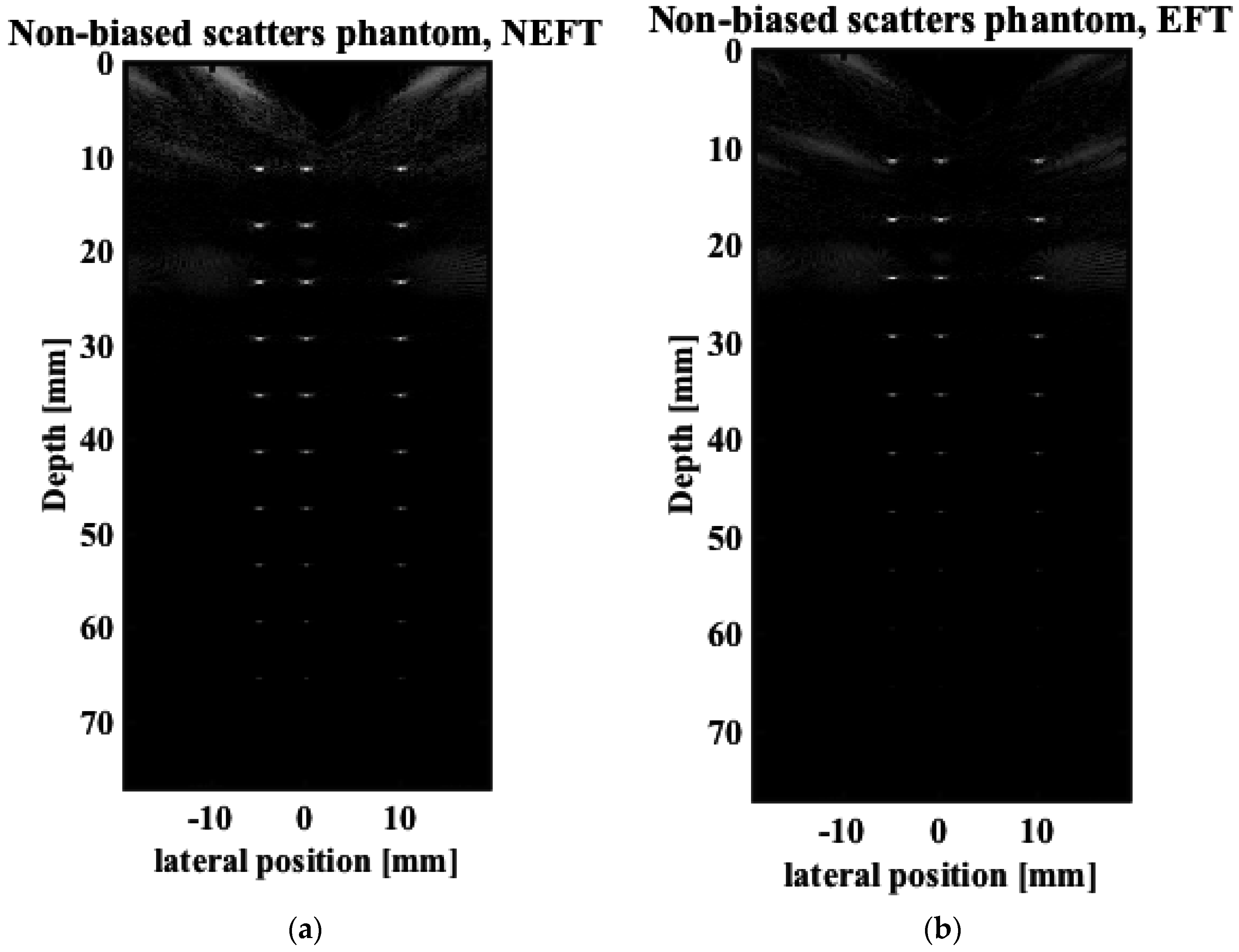
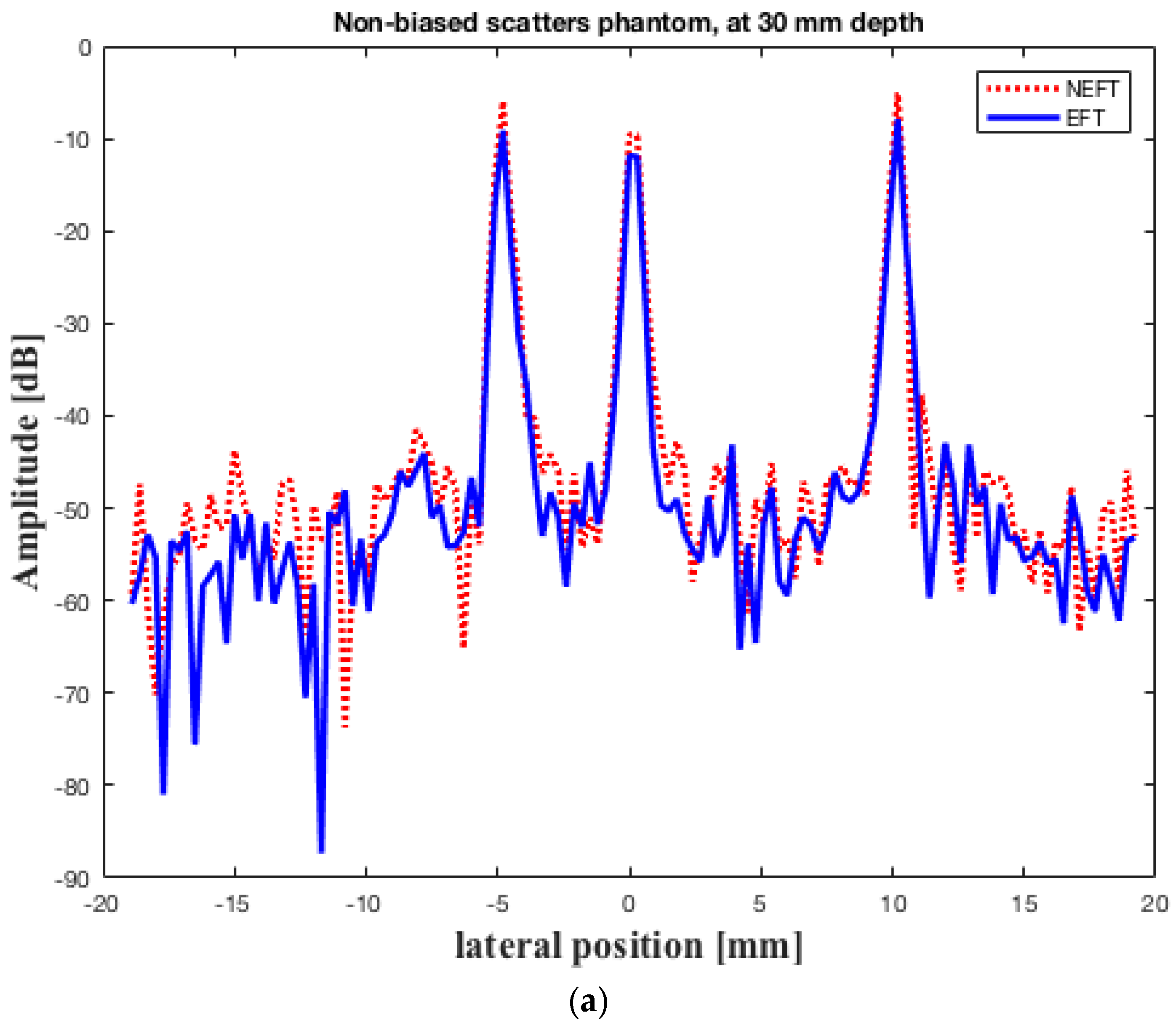
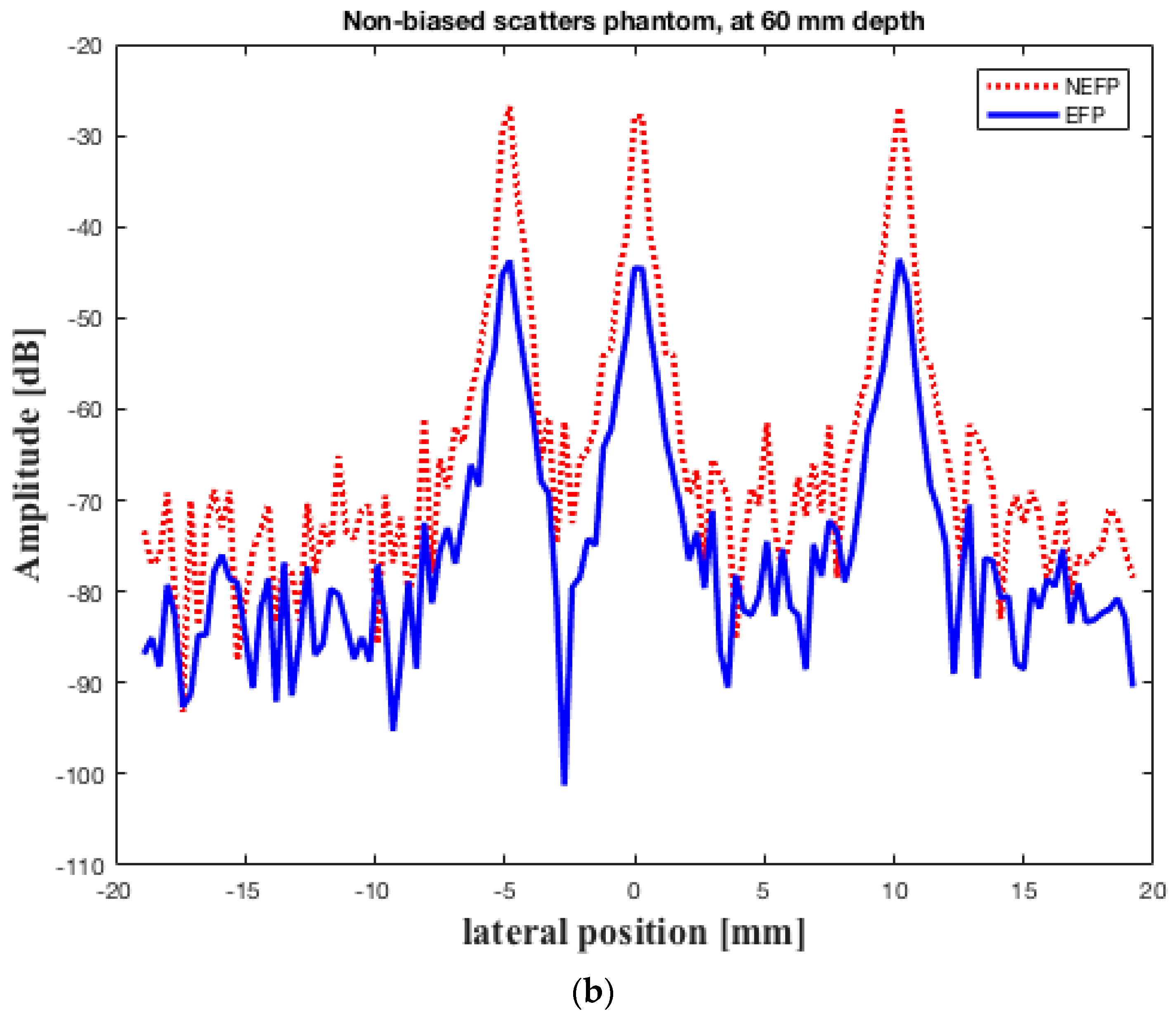
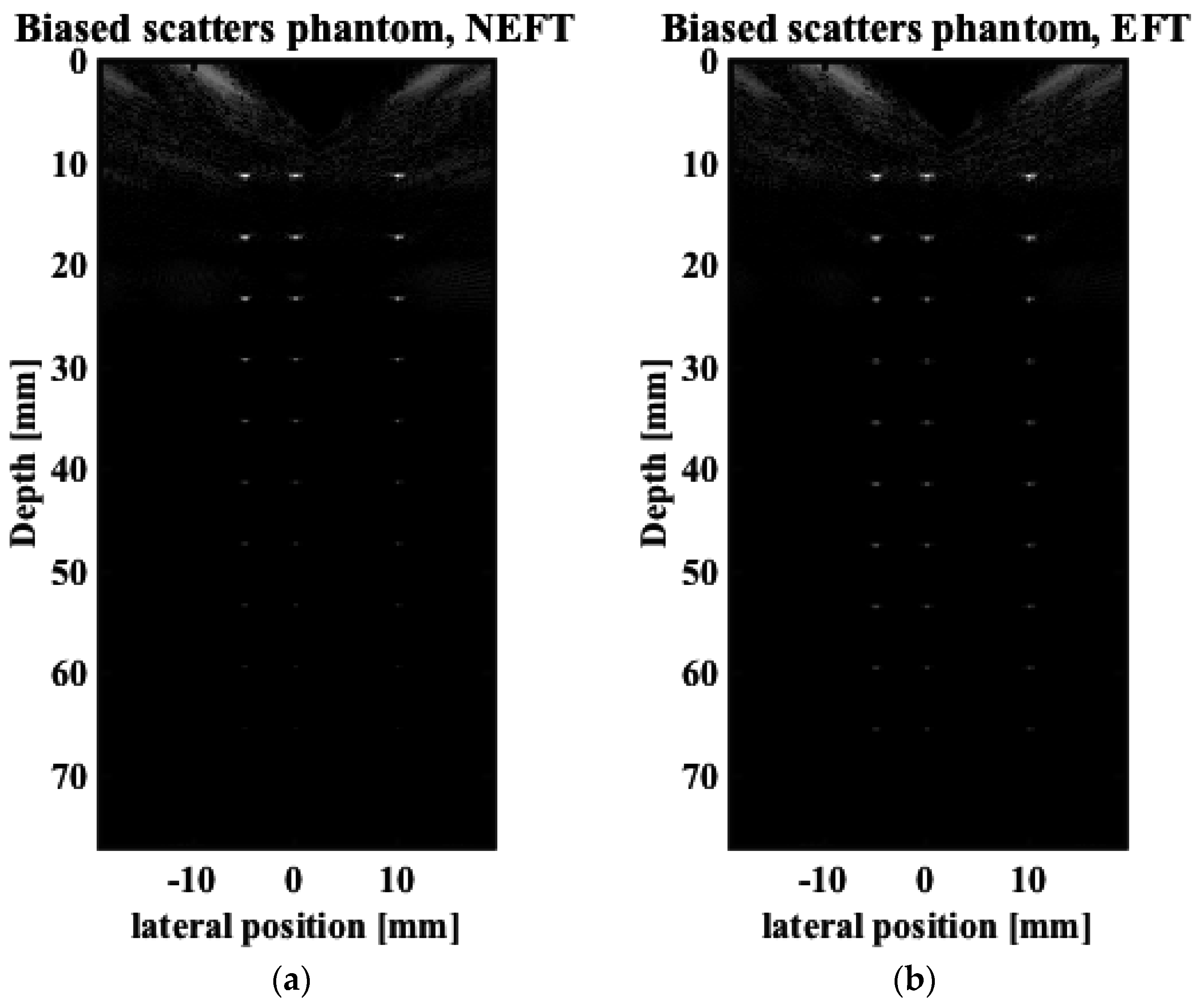

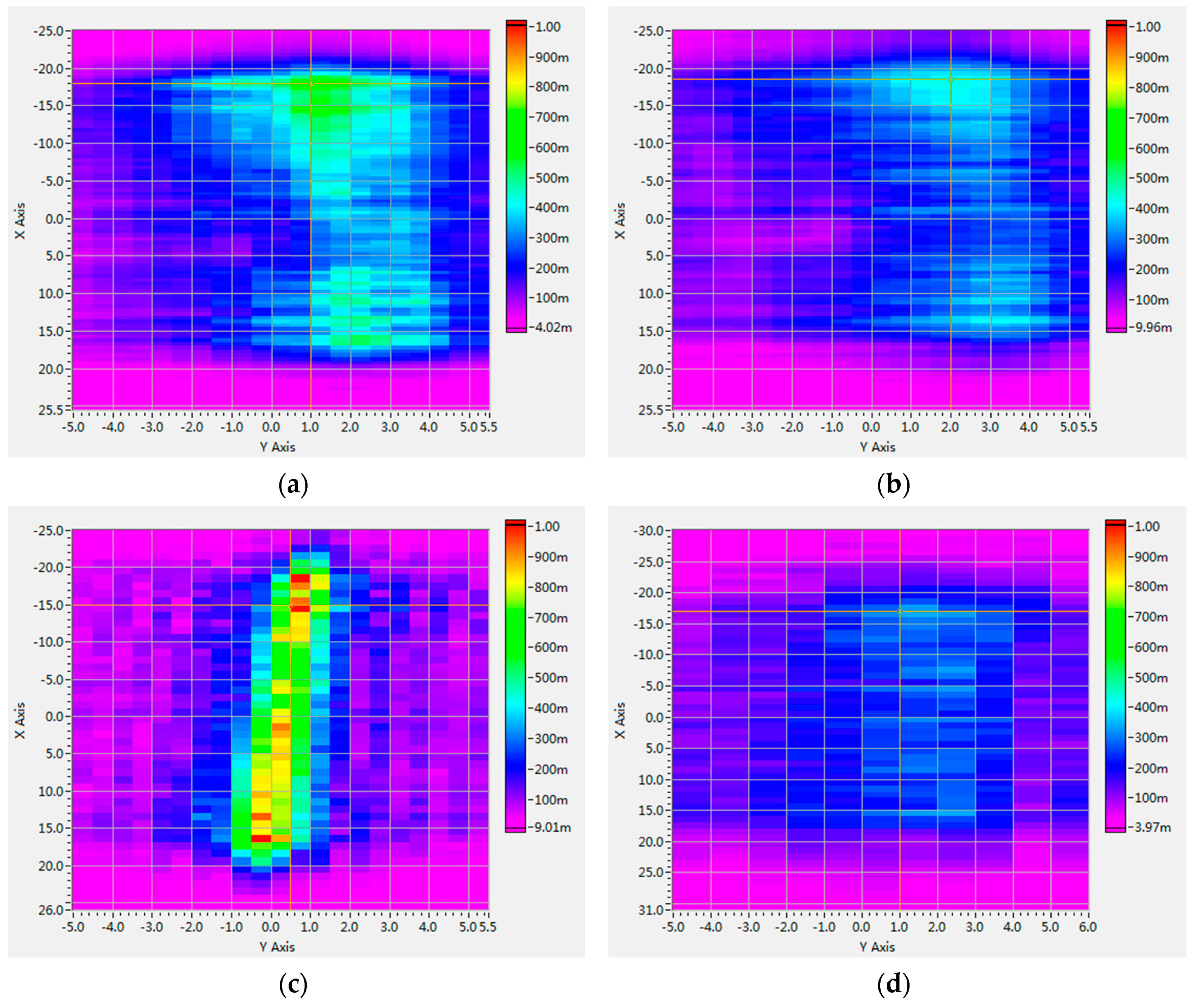
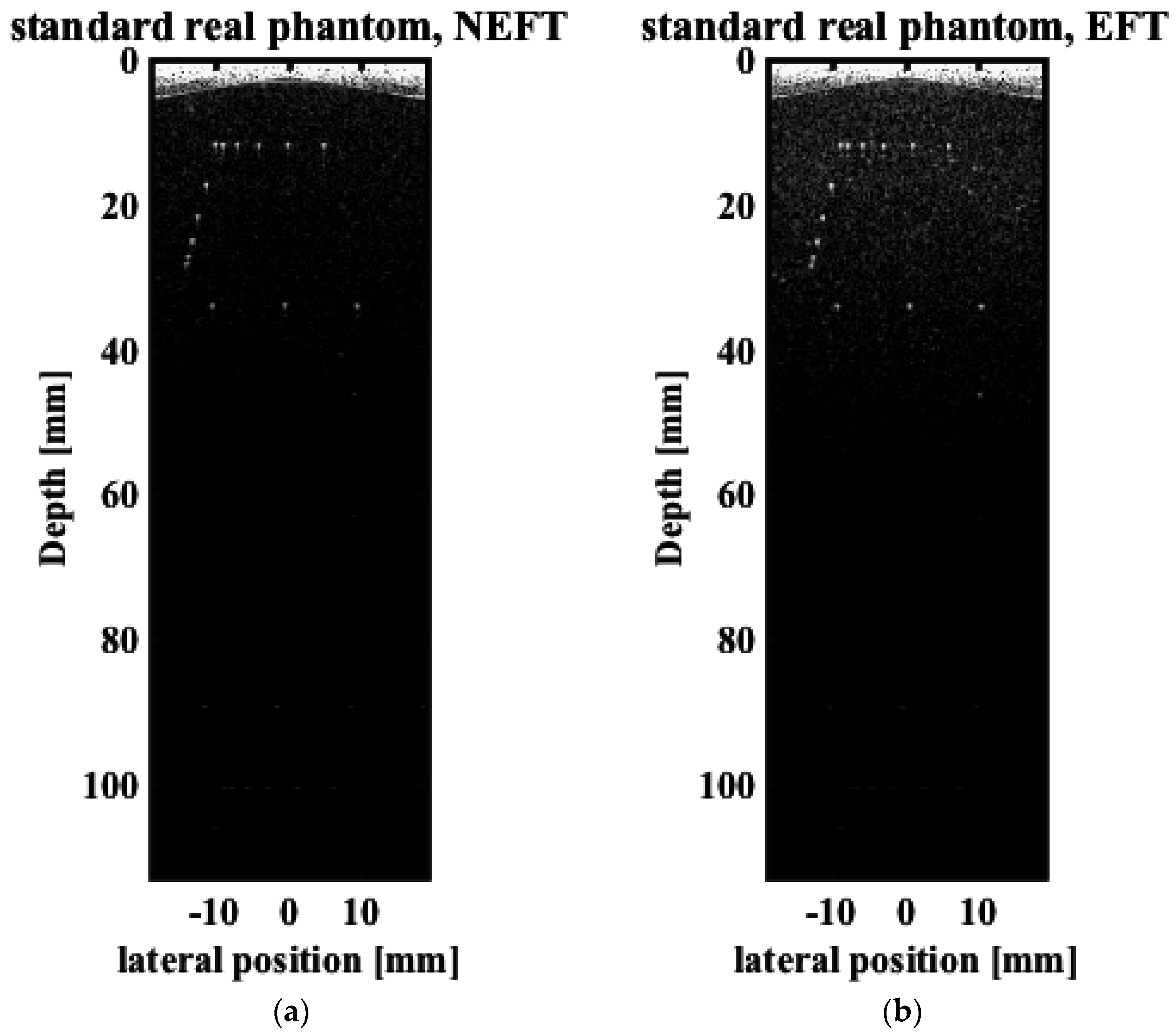
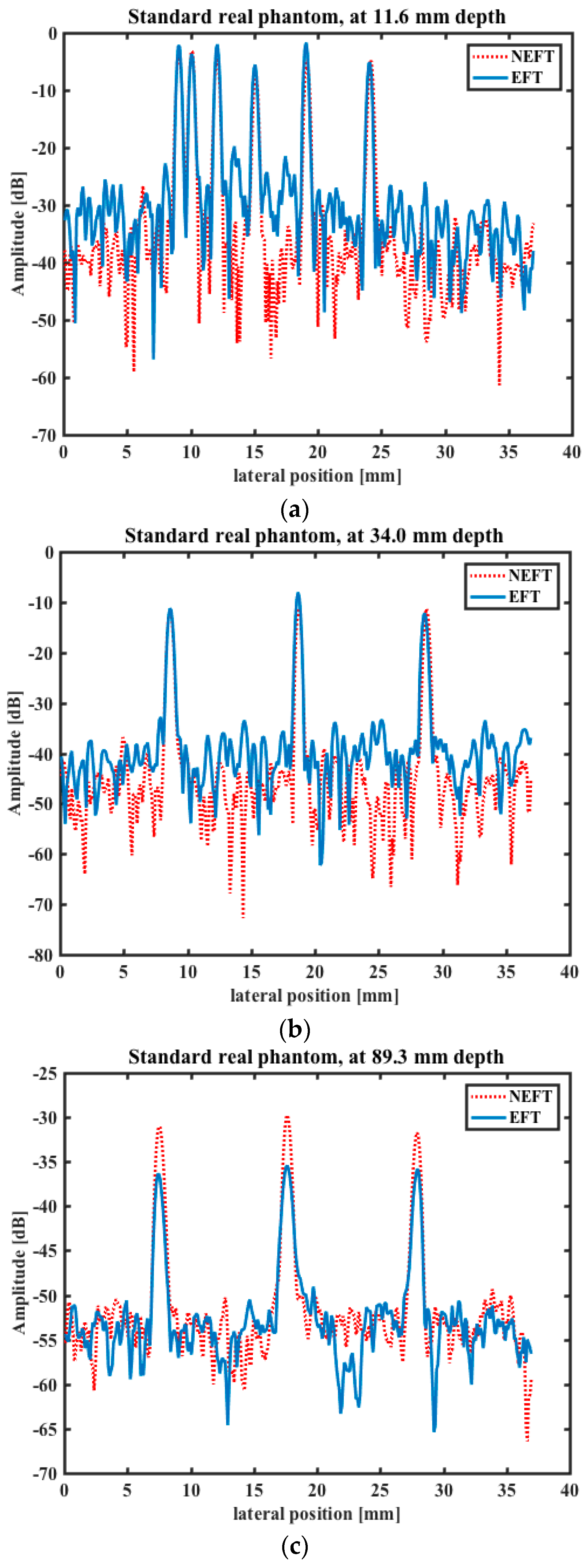
| Parameters | Simulated EFT | Simulated NEFT | Manufactured EFT | Manufactured NEFT |
|---|---|---|---|---|
| Number of Elements | 128 | 128 | 128 | 128 |
| Center frequency (MHz) | 7.5 | 7.5 | 7.5 | 7.5 |
| Pitch (mm) | 0.3 | 0.3 | 0.3 | 0.3 |
| Height of element (mm) | 5 | 5 | 5 | 5 |
| Focus depth in elevation (mm) | 30 | -- | 30 | -- |
| Speed of sound (m/s) | 1540 | 1540 | 1540 | 1540 |
| Sampling frequency (MHz) | 30 | 30 | 30 | 30 |
| Dynamic range of image displaying (dB) | 50 | 50 | 50 | 50 |
| Frequency-dependent attenuation in (dB/[MHz·cm]) | 0.5 | 0.5 | 0.5 | 0.5 |
© 2016 by the authors; licensee MDPI, Basel, Switzerland. This article is an open access article distributed under the terms and conditions of the Creative Commons Attribution (CC-BY) license (http://creativecommons.org/licenses/by/4.0/).
Share and Cite
Wang, C.; Xiao, Y.; Xia, J.; Qiu, W.; Zheng, H. Effects of Non-Elevation-Focalized Linear Array Transducer on Ultrasound Plane-Wave Imaging. Sensors 2016, 16, 1906. https://doi.org/10.3390/s16111906
Wang C, Xiao Y, Xia J, Qiu W, Zheng H. Effects of Non-Elevation-Focalized Linear Array Transducer on Ultrasound Plane-Wave Imaging. Sensors. 2016; 16(11):1906. https://doi.org/10.3390/s16111906
Chicago/Turabian StyleWang, Congzhi, Yang Xiao, Jingjing Xia, Weibao Qiu, and Hairong Zheng. 2016. "Effects of Non-Elevation-Focalized Linear Array Transducer on Ultrasound Plane-Wave Imaging" Sensors 16, no. 11: 1906. https://doi.org/10.3390/s16111906





